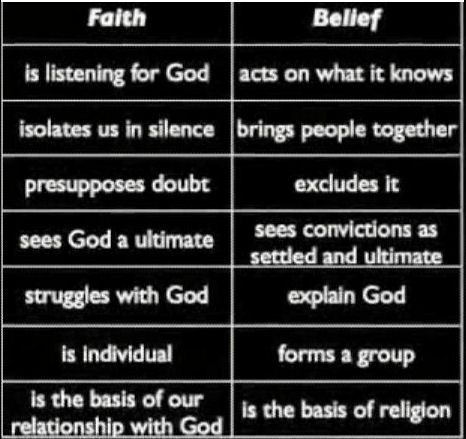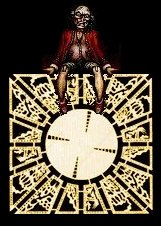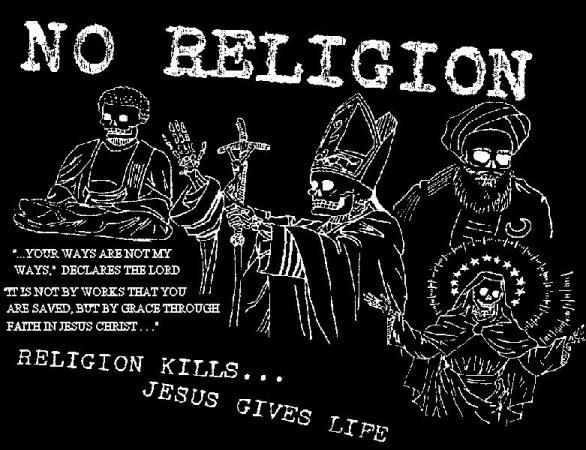
Belief is usually a
part of religiosity. It is concerned with certainties.
Faith, on the other hand, has to do with a response to the revelatory power of Christ. It involves us in lifestyle beyond the letter of the law.
"...people who live in the world of belief feel safe...(but) faith is forever placing us on the razor's edge." Jacques Ellul - Living Faith: Belief and Doubt in a Perilous World
"Christianity is NOT what you do. Christianity is someone to know and trust."
Religion is something to believe:
Attending religious services
Enrolling children in religious schools
Showing acts of kindness
Avoiding immorality
Believing in God
Having religious affiliation
Being Baptized
Receiving communion
Studying doctrine
Reading the Scriptures
Offering prayers
Celebrating religious events
Teaching religious classes
Giving aid to the poor
Singing in the choir
Being recognized as a godly person
Christ is Someone to know and trust:
Someone who is very near
Someone who has authority to help us
Someone who can forgive us
Someone who can declare us righteous
Someone who can teach us
Someone who never leaves us all alone
Someone who can be trusted
Someone who can defend us
Someone who can intercede for us
Someone who can enable us
Someone who can respond to our emotions
Someone who can feel our pain
Someone who can give us peace
Someone who can give us hope
Someone who can give us love
Someone who has proven his love for us
Someone who has died for us
Someone who rose from the dead for us
Someone who can live His life through us
Someone who can take us all the way home
Someone who can assure us of heaven
"Religion can change the outside; but only Christ can change the heart."
"Subversion as regards ALL RELIGIONS began with the revelation of God to Abraham and Moses, to the presence of Jesus among us. We must refer to the judgment of the contemporaries of the first Christians. The Greeks and Romans regarded the Christians as atheists and irreligious people. They did so not merely in relation to the emperor cult, which was both a political and a religious matter, but in relation to ALL cults. When the emperor, seeking what he viewed as a new religion growing in the empire, magnanimously offered to put Christ in the pantheon among the other gods, these strange people refused. This provoked the emperor's rage."
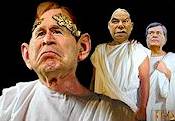
"It was not for nothing that the first Christians were attacked in the Roman Empire as dangerous anarchists, as agents subverting Roman order. They had conscientious objections against military service, against the administration, and against the emperor. They stated that Christians ought NOT to enter the imperial administration or hold office. Witnesses of the period testify to the disquiet this caused. As the Christian faith increased, functionaries decreased. Modern historians have asked whether the dissolution of the empire was not due in large part to this Christian attitude."
Jacques Ellul - "The Subversion of Christianity"
"The goal of the Christian life is not to stop sinning. Knowing Christ is the real goal of the Christian life."
Early Christianity was permeated by the influence of the Mystery cults. The Christianity that I espouse as "the real thing" was Ante Pacem - that is Before the "Peace" of the Roman Emperor Constantine.
The Emperor, who was still devoted to the cult of the sun, took Christian monotheistic claims to rule the world, combined with the social and spiritual forces of Christianity, and set himself as a sole 'God's earthly representative' with the appropriate honour and veneration which was offered previously to the Roman emperor and his image. He also secured the right for himself to exercise the ultimate authority over the church after the council of Niceae, the role which belonged previously to Christian bishops. Christian bishops were given the seats of the previous pagan priests . Christianity entered a new phase in its development. Instead of the ostracized and persecuted community of the cemeteries, catacombs and house-churches, it became Imperial Christianity.
"For three centuries most Christians refused to serve in the army. But when Constantine recognized the faith as the established religion, it represented -
"a weaponless victory of the empire over the gospel."
...when the church that had stood up nonviolently to the brutal repression of the Roman Empire found itself strangely victorious, it naively assumed the role of court chaplain to an empire eager for its support. It is as if Satan, unable to defeat the church by violence, surrendered to the church and became its ward. The price the church paid, however, was embracing violence as a means of preserving empire. But the removal of nonviolence from the gospel blasted the keystone from the arch, and Christianity collapsed into a religion of personal salvation in an afterlife jealously guarded by a wrathful and terrifying God--the whole system carefully managed by an elite corps of priests with direct backing from secular rulers now regarded as the elect agents of God's working in history."
Engaging The Powers by Walter Wink
Once the church accepted the necessity of helping to defend the empire which was its protector, it began blessing war and persecuting other religions, as well as "heretical" Christians. From this arose crusades and inquisitions.
Soon after Constantine's conversion to Christianity we see pagan temples rededicated to Christian worship, and pagan gods transformed into saints. Goddess worship was prevalent in the ancient world and the Roman Catholic Church's devotion to the Virgin Mary is an example of paganism being dressed to look Christian. The Virgin was given the title Queen of Heaven and is depicted wearing a blue robe decorated with stars and standing on a crescent Moon. This image is almost identical to pagan representations of the goddess Ishtar who was worshiped by the Babylonians.
During the period following the emergence of the Mystery cults and the adoption of Christianity as the official religion of the Roman Empire, a new mystical movement arose in the Middle East which attempted to synthesize the best elements of the decaying paganism with the new Christian beliefs. This movement was known as Gnosticism, from the Greek gnosis meaning 'knowledge', and the Gnostics believed, in common with the original disciples of Jesus, that direct contact could be made with God without the intercession of an established priesthood.
Gnosticism is a system of thought that was gaining acceptance around the time of the early first century Christian church. Gnosticism teaches a salvation through knowledge. In the first century, there was a popular Gnostic teaching that Jesus Christ was actually a "spiritual" entity who didn't have a fleshly body. It was this false idea that the apostle John was addressing in the Scripture:
"By this you know the Spirit of God: Every spirit that confesses that Jesus Christ has come in the flesh is of God, and every spirit that does not confess that Jesus Christ has come in the flesh is not of God. And this is the spirit of the Antichrist, which you have heard was coming, and is now already in the world."
1 John 4:2-3
Gnosticism derived its central beliefs from the writings of the Persian spiritual teacher Zoroaster. In its later stages Zoroastrianism became associated with the Mystery cult of the bull god Mithras which originated in Persia as an offshoot of the Zoroastrian religion but swiftly spread westwards where it made many converts among the soldiers of Imperial Rome who were attracted by its masculine image.
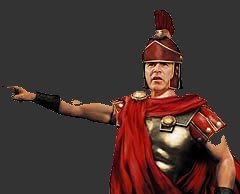
The cult of Mithra contained a special interest for Roman soldiers, for Mithra himself had been for centuries a god of battle, and his was a strong masculine cult appealing to reverential and superstitious soldiers. The soldiers required an assurance of divine protection and courage in their constant contact with the foe. As the legions advanced, so did Mithraism. It soon became the recognized religion of the Roman army and spread in two centuries to the farthest limits of the Roman Empire.
Mithras wore on his head is the Phrygian cap. This distinctive headgear was adopted by the medieval masons.

Mithra, the angel of god or heavenly light, as he was known in both the Vedas of India and old Persian documents, was also a war-like and conquering deity. He was special guardian of the "Great Kings," whom they involved prior to battle and to whom they bound themselves by strong oaths.
The candidate for initiation into the Mithraic Mysteries participated in a rite of death and rebirth which can be compared with Masonic ceremonies.
The candidates took oaths of binding secrecy and were given an obligation which included sacred words known only to the members of the cult.
"But I tell you, Do not bind yourselves by an oath at all: either by heaven, for it is the throne of God; Or by the earth, for it is the footstool of His feet; or by Jerusalem, for it is the city of the Great King. And do not swear by your head, for you are not able to make a single hair white or black. Let your Yes be simply Yes, and your No be simply No; anything more than that comes from the evil one."
Matthew 5:34-37
"I have spoken openly to the world," Jesus replied. "I always taught in synagogues or at the temple, where all the Jews come together. I said nothing in secret."
John 18:20
"And so Jesus also suffered outside the city gate to make the people holy through his own blood. Let us, then, go to him outside the camp, bearing the disgrace he bore. For here we do not have an enduring city, but we are looking for the city that is to come."
Hebrews 13:12-14
Faith, on the other hand, has to do with a response to the revelatory power of Christ. It involves us in lifestyle beyond the letter of the law.
"...people who live in the world of belief feel safe...(but) faith is forever placing us on the razor's edge." Jacques Ellul - Living Faith: Belief and Doubt in a Perilous World
"Christianity is NOT what you do. Christianity is someone to know and trust."
Religion is something to believe:
Attending religious services
Enrolling children in religious schools
Showing acts of kindness
Avoiding immorality
Believing in God
Having religious affiliation
Being Baptized
Receiving communion
Studying doctrine
Reading the Scriptures
Offering prayers
Celebrating religious events
Teaching religious classes
Giving aid to the poor
Singing in the choir
Being recognized as a godly person
Christ is Someone to know and trust:
Someone who is very near
Someone who has authority to help us
Someone who can forgive us
Someone who can declare us righteous
Someone who can teach us
Someone who never leaves us all alone
Someone who can be trusted
Someone who can defend us
Someone who can intercede for us
Someone who can enable us
Someone who can respond to our emotions
Someone who can feel our pain
Someone who can give us peace
Someone who can give us hope
Someone who can give us love
Someone who has proven his love for us
Someone who has died for us
Someone who rose from the dead for us
Someone who can live His life through us
Someone who can take us all the way home
Someone who can assure us of heaven
"Religion can change the outside; but only Christ can change the heart."
"Subversion as regards ALL RELIGIONS began with the revelation of God to Abraham and Moses, to the presence of Jesus among us. We must refer to the judgment of the contemporaries of the first Christians. The Greeks and Romans regarded the Christians as atheists and irreligious people. They did so not merely in relation to the emperor cult, which was both a political and a religious matter, but in relation to ALL cults. When the emperor, seeking what he viewed as a new religion growing in the empire, magnanimously offered to put Christ in the pantheon among the other gods, these strange people refused. This provoked the emperor's rage."

"It was not for nothing that the first Christians were attacked in the Roman Empire as dangerous anarchists, as agents subverting Roman order. They had conscientious objections against military service, against the administration, and against the emperor. They stated that Christians ought NOT to enter the imperial administration or hold office. Witnesses of the period testify to the disquiet this caused. As the Christian faith increased, functionaries decreased. Modern historians have asked whether the dissolution of the empire was not due in large part to this Christian attitude."
Jacques Ellul - "The Subversion of Christianity"
"The goal of the Christian life is not to stop sinning. Knowing Christ is the real goal of the Christian life."
Early Christianity was permeated by the influence of the Mystery cults. The Christianity that I espouse as "the real thing" was Ante Pacem - that is Before the "Peace" of the Roman Emperor Constantine.
The Emperor, who was still devoted to the cult of the sun, took Christian monotheistic claims to rule the world, combined with the social and spiritual forces of Christianity, and set himself as a sole 'God's earthly representative' with the appropriate honour and veneration which was offered previously to the Roman emperor and his image. He also secured the right for himself to exercise the ultimate authority over the church after the council of Niceae, the role which belonged previously to Christian bishops. Christian bishops were given the seats of the previous pagan priests . Christianity entered a new phase in its development. Instead of the ostracized and persecuted community of the cemeteries, catacombs and house-churches, it became Imperial Christianity.
"For three centuries most Christians refused to serve in the army. But when Constantine recognized the faith as the established religion, it represented -
"a weaponless victory of the empire over the gospel."
...when the church that had stood up nonviolently to the brutal repression of the Roman Empire found itself strangely victorious, it naively assumed the role of court chaplain to an empire eager for its support. It is as if Satan, unable to defeat the church by violence, surrendered to the church and became its ward. The price the church paid, however, was embracing violence as a means of preserving empire. But the removal of nonviolence from the gospel blasted the keystone from the arch, and Christianity collapsed into a religion of personal salvation in an afterlife jealously guarded by a wrathful and terrifying God--the whole system carefully managed by an elite corps of priests with direct backing from secular rulers now regarded as the elect agents of God's working in history."
Engaging The Powers by Walter Wink
Once the church accepted the necessity of helping to defend the empire which was its protector, it began blessing war and persecuting other religions, as well as "heretical" Christians. From this arose crusades and inquisitions.
Soon after Constantine's conversion to Christianity we see pagan temples rededicated to Christian worship, and pagan gods transformed into saints. Goddess worship was prevalent in the ancient world and the Roman Catholic Church's devotion to the Virgin Mary is an example of paganism being dressed to look Christian. The Virgin was given the title Queen of Heaven and is depicted wearing a blue robe decorated with stars and standing on a crescent Moon. This image is almost identical to pagan representations of the goddess Ishtar who was worshiped by the Babylonians.
During the period following the emergence of the Mystery cults and the adoption of Christianity as the official religion of the Roman Empire, a new mystical movement arose in the Middle East which attempted to synthesize the best elements of the decaying paganism with the new Christian beliefs. This movement was known as Gnosticism, from the Greek gnosis meaning 'knowledge', and the Gnostics believed, in common with the original disciples of Jesus, that direct contact could be made with God without the intercession of an established priesthood.
Gnosticism is a system of thought that was gaining acceptance around the time of the early first century Christian church. Gnosticism teaches a salvation through knowledge. In the first century, there was a popular Gnostic teaching that Jesus Christ was actually a "spiritual" entity who didn't have a fleshly body. It was this false idea that the apostle John was addressing in the Scripture:
"By this you know the Spirit of God: Every spirit that confesses that Jesus Christ has come in the flesh is of God, and every spirit that does not confess that Jesus Christ has come in the flesh is not of God. And this is the spirit of the Antichrist, which you have heard was coming, and is now already in the world."
1 John 4:2-3
Gnosticism derived its central beliefs from the writings of the Persian spiritual teacher Zoroaster. In its later stages Zoroastrianism became associated with the Mystery cult of the bull god Mithras which originated in Persia as an offshoot of the Zoroastrian religion but swiftly spread westwards where it made many converts among the soldiers of Imperial Rome who were attracted by its masculine image.

The cult of Mithra contained a special interest for Roman soldiers, for Mithra himself had been for centuries a god of battle, and his was a strong masculine cult appealing to reverential and superstitious soldiers. The soldiers required an assurance of divine protection and courage in their constant contact with the foe. As the legions advanced, so did Mithraism. It soon became the recognized religion of the Roman army and spread in two centuries to the farthest limits of the Roman Empire.
Mithras wore on his head is the Phrygian cap. This distinctive headgear was adopted by the medieval masons.

Mithra, the angel of god or heavenly light, as he was known in both the Vedas of India and old Persian documents, was also a war-like and conquering deity. He was special guardian of the "Great Kings," whom they involved prior to battle and to whom they bound themselves by strong oaths.
The candidate for initiation into the Mithraic Mysteries participated in a rite of death and rebirth which can be compared with Masonic ceremonies.
The candidates took oaths of binding secrecy and were given an obligation which included sacred words known only to the members of the cult.
"But I tell you, Do not bind yourselves by an oath at all: either by heaven, for it is the throne of God; Or by the earth, for it is the footstool of His feet; or by Jerusalem, for it is the city of the Great King. And do not swear by your head, for you are not able to make a single hair white or black. Let your Yes be simply Yes, and your No be simply No; anything more than that comes from the evil one."
Matthew 5:34-37
"I have spoken openly to the world," Jesus replied. "I always taught in synagogues or at the temple, where all the Jews come together. I said nothing in secret."
John 18:20
"And so Jesus also suffered outside the city gate to make the people holy through his own blood. Let us, then, go to him outside the camp, bearing the disgrace he bore. For here we do not have an enduring city, but we are looking for the city that is to come."
Hebrews 13:12-14
